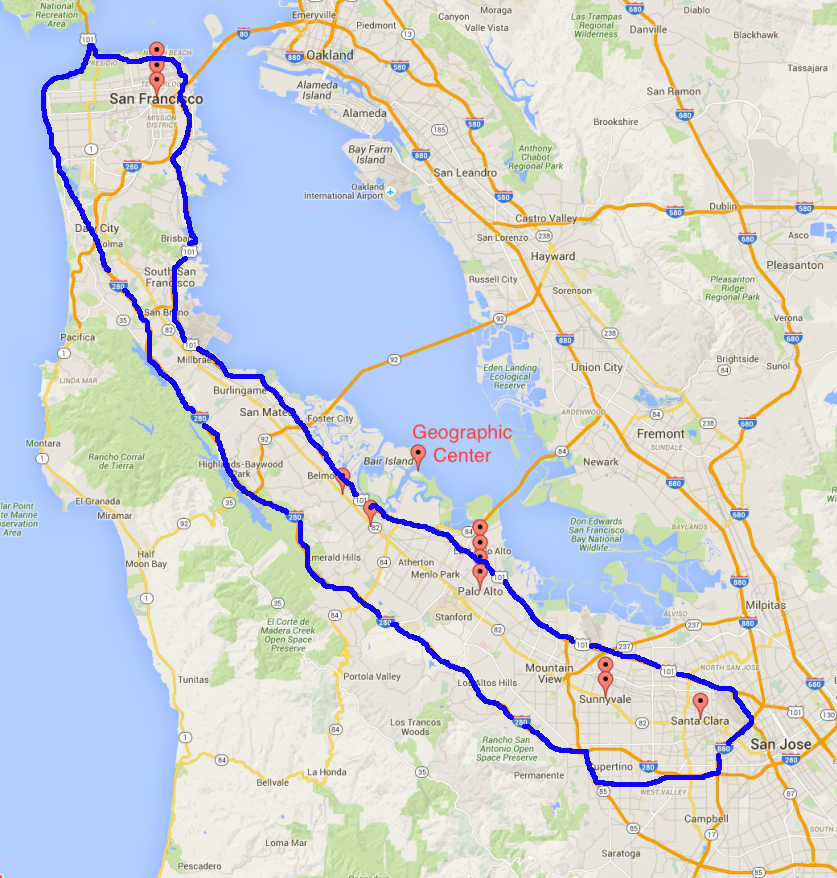UPDATE
Palo Altans for Sensible Zoning have sent a letter to MTC/ABAG signed by members of several City Councils and citizens with comments on the methodology used for Plan Bay Area 2050 and the Regional Housing Need Allocation (RHNA) numbers to be submitted to the State. To download a copy of the letter, click here.
By law, regional government agencies for the Bay Area—MTC/ABAG–must approve a new growth plan—Plan Bay Area 2050. The process must start by acknowledging that the previous Plan has failed to address those issues that have had a huge negative impact on life in the Bay Area. We must address these issues now or accept a continuation of an ineffective Plan for the next eight years.
The Imbalances
Look at the evidence. The current “Plan Bay Area: Strategy for a Sustainable Region (July 2013)” outlined job growth for the region and for communities within the region for the period 2010-2040. The goal of the Plan was to “direct job growth to the region’s larger cities and Priority Development Areas with strong existing employment base and communities with stronger opportunities for knowledge-sector jobs” (Plan Bay Area (March 2013), p 10). The result was to be an “innovative, prosperous and competitive economy while allowing residents to share the benefits of vibrant, sustainable communities” (p 1).
But the results have been dramatically different than those envisioned. Concentrated job growth in the West Bay has been excessive. (The West Bay is that narrow strip of land between the Bay and Coastal mountains that stretches from San Francisco to the southern border of the cities of Santa Clara and Cupertino.) Between 2010 and 2017, this relatively small area has had an increase of over 250,000 new jobs. That is two and a half times the number of new jobs in the entire rest of the Bay Area. Over half of those jobs are accounted for by commuters from outside the region along narrow congested commute corridors. In the original Plan Bay Area, the fastest job growth was targeted to be distributed among the three major cities of San Francisco, Oakland and San Jose. Job growth in Oakland and San Jose was to be about 80% that of that in the cities in the West Bay. Between 2010 and 2017 the actual job growth ratio in the cities of Oakland and San Jose was only 16% of that in the West Bay.
The Critical Issues That Have Emerged
These extraordinary imbalances have created huge economic, social and political problems. To put together an effective Plan Bay Area 2050, there are at least ten critical issues that must be addressed. They include:
- Land Cost;
- Housing costs;
- Building incentives;
- Income inequality;
- Congestion;
- Failure of transit;
- Lack of appropriate infrastructure;
- The strain on families;
- Sustainability goals;
- The future of local democracy.
An Effective Planning Process
We need five new elements at the front of the planning process:
- A REITERATIVE MODELING PROCESS THAT CAN EXPLORE THE CONSEQUENCES OF ALTERNATIVE JOB GROWTH PROJECTIONS IN SPECIFIC LOCATIONS
- THE ABILITY TO OFFER INCENTIVES FOR ALTERNATIVE DISTRIBUTIONS OF JOBS ACROSS THE BAY AREA
- A TRANSIT SYSTEM THAT CAN BETTER HANDLE THE CURRENT JOB IMBALANCES
- AN EFFECTIVE WAY TO ASSURE THAT BUSINESSES PAY THEIR FAIR SHARE OF RISING INFRASTRUCTURE COSTS
- A PLANNING PROCESS THAT ALLOWS FOR REALISTIC ALTERNATIVES TO THE STAFF PROJECTED OUTCOMES
NOTE: The document “Plan Bay Area 2050 Methodology” provides details and key references on the imbalances, the critical issues and an effective planning process.
For a copy of the slides from Dr. Schmid’s talk, click here.


